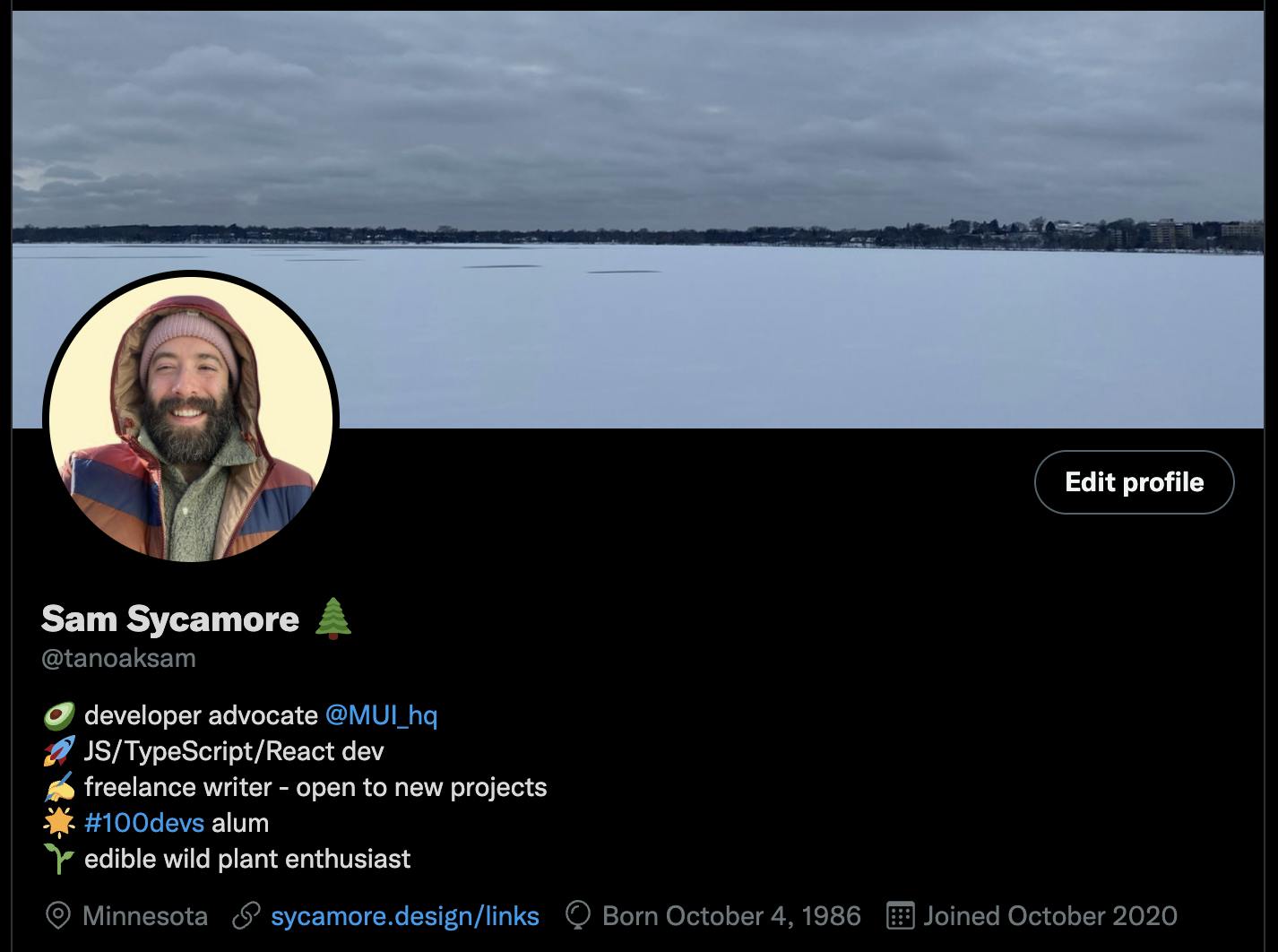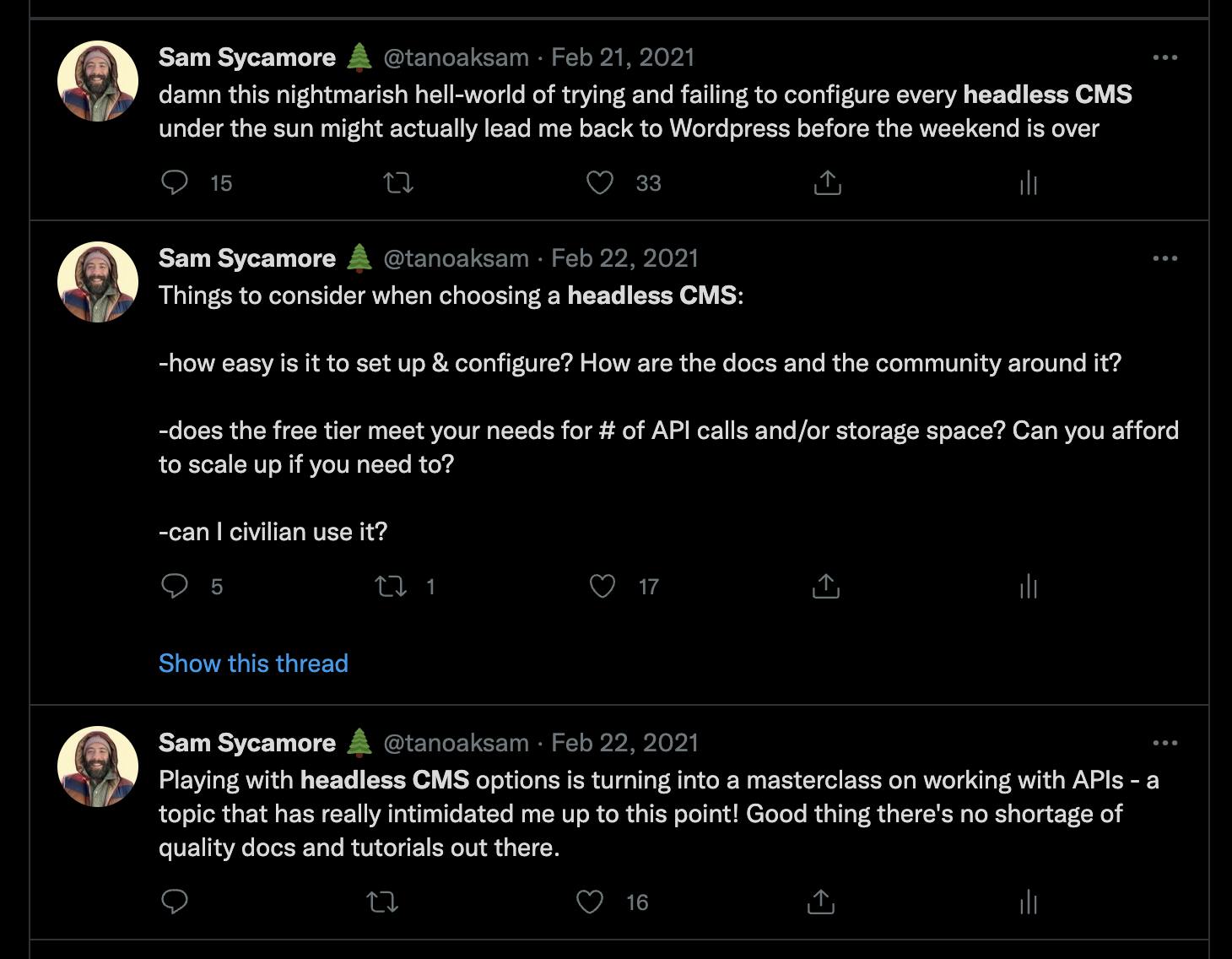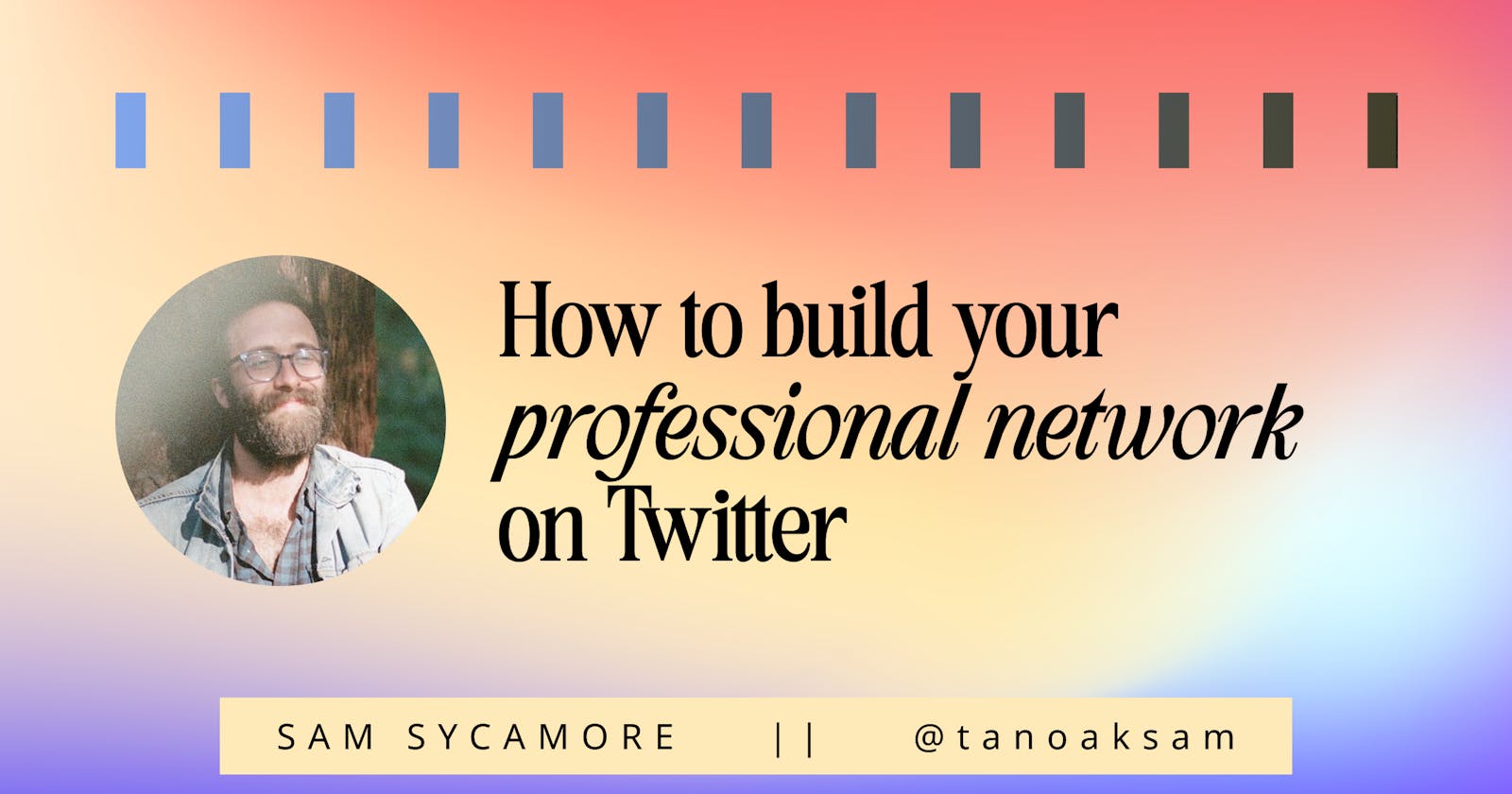How to Build Your Professional Network on Twitter
No growth hacks, just tried-and-true advice for forging meaningful connections that can lead to friendships and professional opportunities.
The best thing I ever did for my tech career was build a professional network on Twitter.
Almost every job opportunity I've had in tech has started in Twitter DMs.
I get a lot of questions about how to grow an audience on Twitter, and to be perfectly honest, I have no clue, and I am skeptical of anyone who says they do.
I never imagined that I'd rack up tens of thousands of followers, and I'm still not entirely sure why so many people follow me. 🤷♂️
I've always been primarily interested in building relationships with people, and I think that's something different than building an audience.
You won't find any "growth hacks," tired memes, or clickbait here.
I can't teach you how to be super popular 😎 on Twitter, but I am happy to share what works for me—and what I've seen work for others—when it comes to using Twitter to build relationships that can evolve into friendships and professional opportunities.
Set Up Your Profile For Success
People want to have conversations with other people.
Obvious, right?
Who are you, Anon?
Most people don't want to have conversations with anime avatars, stock photos, brand accounts, or obviously fake names.
(A notable exception is the web3 community, where folks are more likely to prefer anonymity and often use NFTs for their profile pics. But that's another story.)
Personally, I am way less likely to engage with anonymous accounts on Twitter.
Why?
As someone with a fairly "big" account, I get a lot of spammers and trolls who come around just to give me a hard time. They are almost always anonymous.
It's just not a good look if you're trying to make real connections with other people.
Be a person!
Have a look at my profile:

What do you notice?
I use my real name
I use a recent photo of myself where you can clearly see my goofy smiling face
I include my job title and the company I work for
I list the relevant technologies that I work with
I mention that I'm open to new freelancing projects
I shout out the coding bootcamp that I attended
I mention a random non-tech hobby of mine
All of this adds up to social proof—evidence that I'm a real human with a real job, involved in real projects and communities, and actively engaged in real interests beyond just my career.
(Note: I completely understand why someone might be apprehensive about sharing details about their identity publicly. At a bare minimum, you should at least use your real first name and tell us about your interests. Share your full name, photo, employer, and location only if you're comfortable.)
Bonus points for a better profile:
I used a free tool to remove the background from my photo—this helps make the photo less cluttered
I created a special page on my website (optimized for mobile viewing) with a list of links that may be of interest to my followers
Alright, so you look like a person on the surface. Great! Now what?
Share What You're Doing
Tell us what you're up to! It's not rocket surgery.
What did you learn today?
What problems did you encounter?
How did you solve the problems that you faced?
Did you form any opinions about the tools you're working with?
Are you having trouble finding an answer to a question via Google?
I built a following on Twitter largely by learning and building in public, and sharing what I was learning in real time via blog posts and multi-tweet threads. 🧵
"But I don't have anything uniquely interesting to share!"
OK—so what?
Nobody's asking you to only tweet things that have never been expressed in the history of the universe.
What makes it unique is that's it's coming from you.
I see too many people succumb to paralysis by over-analysis: you're so worried about the quality of your tweets that you end up with a near-zero quantity.
I prefer a rapid-fire approach to tweeting.
I like to use my feed as a place to "think out loud" while I'm working on projects, and get feedback and answers to questions I might have along the way.
For example, in February 2021 I became really interested in the Jamstack and the concept of a headless CMS.
If you search for "headless CMS" on my profile, you'll find dozens of tweets from this period in my learning journey:

You'll notice that none of these tweets got a ton of engagement, but it didn't really matter.
People still came to know me as "the headless CMS guy."
I clearly demonstrated that I had specialized knowledge in tech that others were interested in.
In fact, my knowledge of headless CMS is what led Nacho Iacovino to reach out to me for the first time, and we quickly became friends and professional collaborators after that.
It all started with a conversation about a shared interest of ours!
It pays to be intentional about defining your niche.
What's your niche?
When I was trying to earn an income as a freelancer, I used to tweet about freelancing constantly.
Just like the headless CMS phase, I wanted people to associate my name with freelancer in the tech industry.
After about two months of this, I had more contract opportunities coming in through my DMs than I was able to take on.
I know it's hard to believe. But I've got the receipts. 😅
Just by constantly screaming into the void about who I am and what I could do, I was able to start freelancing full-time after 8 months of learning web development.
But what I've shown you so far is only half of the story.
None of my accomplishments would have been possible without the other half.
Engage With People Who Interest You
Making friends on social media is impossible if you treat it like a one-way street.
People want to engage in reciprocal relationships: each of us brings something of value to the table.
That word "value" can be intimidating, especially when you're a newbie developer and you don't feel like you have anything "valuable" to contribute to any given conversation.
But please allow me to dispel the fear: "value" can be as simple as just showing up and being nice to the people you're interested in building relationships with.
For me, the value that I bring to the table most frequently falls into one of two categories:
hype / celebrating wins
joking around
No, seriously.
It really is that simple.
If you want people to hype you up, then you should start by hyping them up. They will naturally want to reciprocate. Trust me on this! I am proof that it works!
The tweet below led directly to multiple interviews, because I put in the work to build relationships with people who wanted to pay me back when I asked for help:
First in the replies, then in the DMs
If you ask me, you should get acquainted with people who interest you in the replies to their tweets first, and then slide into their DMs after you've built a rapport with them.
This could be a matter of personal preference for me, but I suspect I'm not alone.
I get a lot of DMs 😅 and to be honest, I just don't have enough time in the day to give each one the attention they deserve.
I am much more likely to quickly respond to a DM from someone I'm already familiar with. Lasting relationships are rarely built overnight.
❌ What not to do
Here are the three worst DMs you could send if you're hoping for a reply:
"Hi"
"Hey, how's it going?"
"Hey, can I ask you a question?"
Frankly, most people are not going to take the time to get to the bottom of whatever it is that you're contacting them about.
Get to the point! And be specific.
✅ Do this instead
Asking for help:
"Hey {{person}}! 👋
I really like {{that specific thing that interests you about the person}}! I saw that you have some experience with {{the thing you have a question about}}.
Quick question: if I was going to [...], do you know how I would solve {{some specific problem}}? Or do you know any resources or other people who could help me out with this?
I tried A, B, and C already, but none of these solved my problem. I would really appreciate your help! Thanks!"
Asking to chat:
"Hey {{person}}! 👋
I noticed that we both share an interest in X. That's so cool!
I'm interested in pursuing a career path similar to yours, and I'm really curious about how you got where you are now.
Do you have time for a 15-minute call sometime in the next week or two? I would love to hear about your journey. Thanks!"
Now You Have a Professional Network
Simple? Sure. Easy? Depends.
Forging real connections with people takes time.
Be patient, and don't take it personally if you don't get the response you hope for from the people you want to connect with.
Always aim to give more than you take.
As with most things in life, consistency is key.
Show up consistently for other people, and they will want to do the same for you.
The people who do show up for you—guess what? That's your network!
Treat them well, and your network will grow.
If you enjoyed this piece and you want to keep up with my work, you can sign up for my email newsletter through this link. I promise to make every email something you will be excited to open!

